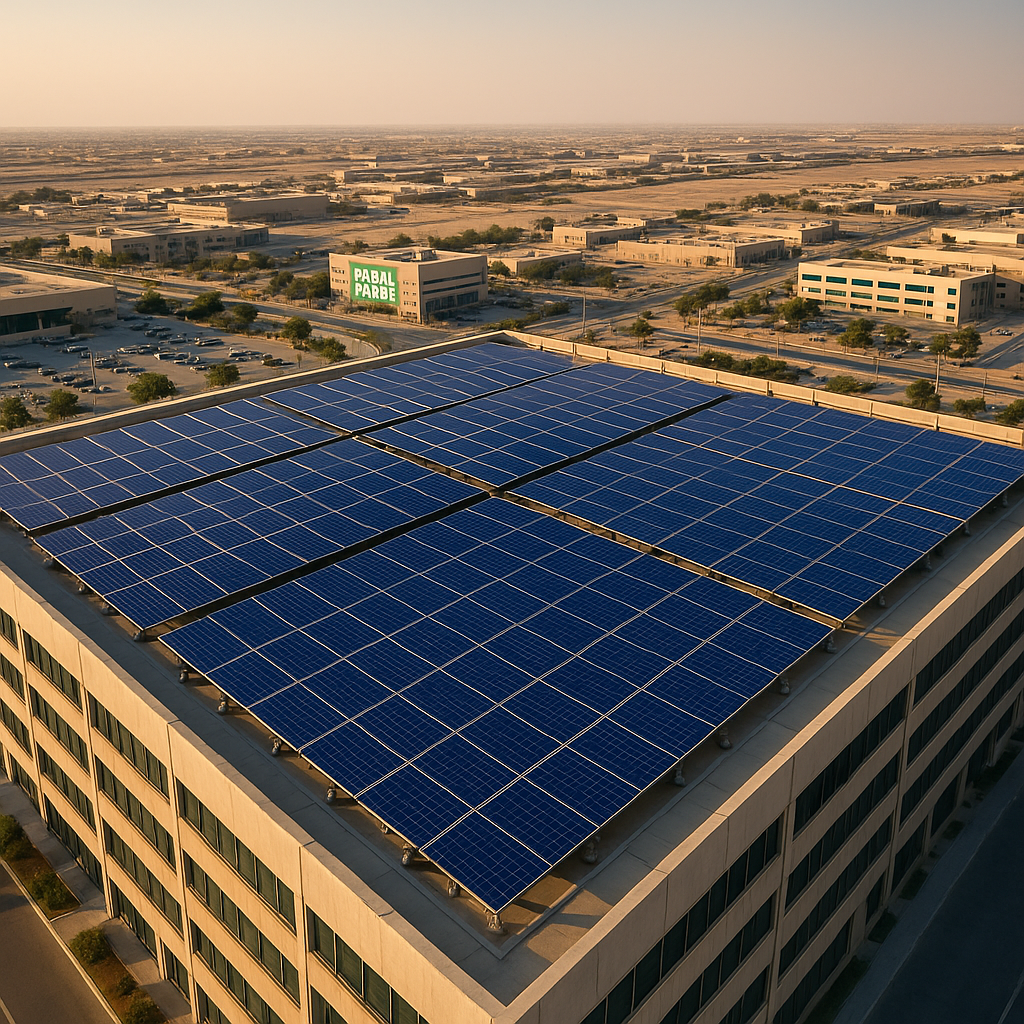How Dubai South’s solar strategy aligns with UAE Net Zero 2050 goals
Results showed that despite the region’s high temperatures, which can reduce PV panel efficiency, energy generation remained consistently high. Peak outputs in spring months were attributed to favorable temperature-irradiance balances, while automated cleaning systems ensured minimal performance loss due to dust accumulation. The performance ratio remained above 81% annually, with system availability exceeding 98%, confirming both operational resilience and technical feasibility.

- Country:
- United Arab Emirates
Cities worldwide are intensifying their push toward sustainability, with Dubai emerging as a frontrunner in integrating renewable energy within complex urban ecosystems. A study published in Sustainability (2025, Vol. 17, Article 6093), introduces a comprehensive strategy for solar energy deployment that could reshape energy policy in logistics-based cities globally.
Titled “Integration of Renewable Energy Strategies: A Case in Dubai South”, the research uses Dubai South, a rapidly growing aerotropolis comprising aviation, logistics, commercial, and residential zones, as a testbed for developing a scalable, district-specific roadmap. Grounded in real-world data from the Dubai South Headquarters solar project, the study aligns closely with the Dubai Clean Energy Strategy 2050, the UAE’s Net Zero by 2050 commitment, and global decarbonization goals set under COP28.
How can renewable energy be effectively integrated into an aerotropolis like Dubai South?
The study develops a scalable renewable energy roadmap tailored to the distinct urban typology of Dubai South. The researchers anchor their roadmap in three key frameworks: Sustainable Strategic Management (SSM), Energy Management Systems (EMS), and Firm- and Country-Specific Advantages (FSAs and CSAs).
At its core, the strategy is based on the successful deployment of a 1 MWp rooftop solar installation at Dubai South’s headquarters. The system, commissioned in 2020 and monitored throughout 2022, served as the testbed for a broader integration plan. Using real-time performance data collected through Meteocontrol’s monitoring platform, the researchers analyzed operational reliability, temperature sensitivity, irradiance variability, and energy offset potential.
Results showed that despite the region’s high temperatures, which can reduce PV panel efficiency, energy generation remained consistently high. Peak outputs in spring months were attributed to favorable temperature-irradiance balances, while automated cleaning systems ensured minimal performance loss due to dust accumulation. The performance ratio remained above 81% annually, with system availability exceeding 98%, confirming both operational resilience and technical feasibility.
Complementing the technical insights, a resource assessment found that wind energy was not viable for rooftop deployment due to low average wind speeds (2.23 m/s), thus reinforcing solar PV as the dominant renewable resource for Dubai South.
What district-specific strategies were proposed to meet Dubai’s clean energy goals?
Recognizing the varied operational demands of Dubai South’s districts, the strategy features customized roadmaps for aviation, logistics, and residential zones:
-
Aviation District: This high-reliability sector required integration planning aligned with aviation safety protocols. The preferred model here is solar leasing, which allows for rapid deployment without straining operational liquidity. Emphasis was placed on smart grid integration and fault-tolerant design to support mission-critical functions.
-
Logistics District: Characterized by variable loads and 24/7 operations, this district benefits from microgrid architectures and battery energy storage systems (BESS). Here, a mix of EPC (Engineering, Procurement, and Construction) and leasing models allows flexibility across facility types. Real-time energy management systems ensure load forecasting and dynamic optimization.
-
Residential District: A community-oriented roadmap emphasized rooftop solar, modular batteries, and occupant engagement through smart meters and behavioral tools. Financial models were tailored to accommodate diverse income levels, with strong adherence to DEWA regulations and Dubai Municipality’s building codes.
The study also validated its methodology through a secondary case: the Sakany Solar Project in the Logistics District. Commissioned in 2023, this residential labor housing complex deployed a 900 kWp PV system, achieving a 46% energy offset and reducing carbon emissions by over 159 metric tons within the first year. With a payback period of just under six years, this case reinforced the economic viability and replicability of the HQ model.
What are the broader impacts on policy, environment, and future technology adoption?
The study’s environmental impact assessment confirmed a 38% drop in energy use intensity (EUI) at Dubai South HQ, from 162 to 100 kWh/m²/year. Between 2020 and 2022, solar energy systems in Dubai South collectively offset nearly 2,000 metric tons of CO₂. Water usage for panel cleaning was minimized through robotic systems using as little as 0.5 liters per panel per cycle, essential in water-scarce desert climates.
On the financial front, the research compares EPC and solar lease models. The former suits asset-heavy institutions like aviation authorities, while the latter appeals to cash-flow-conscious logistics firms. Both models were shown to deliver long-term savings and operational reliability.
A structured risk management framework was also integral to the strategy. Risks were categorized across five domains, technical, environmental, financial, regulatory, and operational, with response strategies including thermographic inspections, remote monitoring, and advanced O&M protocols.
The study acknowledges future challenges too, including, the high cost and thermal vulnerability of AI-enabled energy systems and BESS, integration difficulties with legacy infrastructure, and the need for regulatory sandboxing to test innovative solutions. To overcome these barriers, the authors propose phased rollouts, public–private partnerships, and real-time performance monitoring.
- FIRST PUBLISHED IN:
- Devdiscourse










